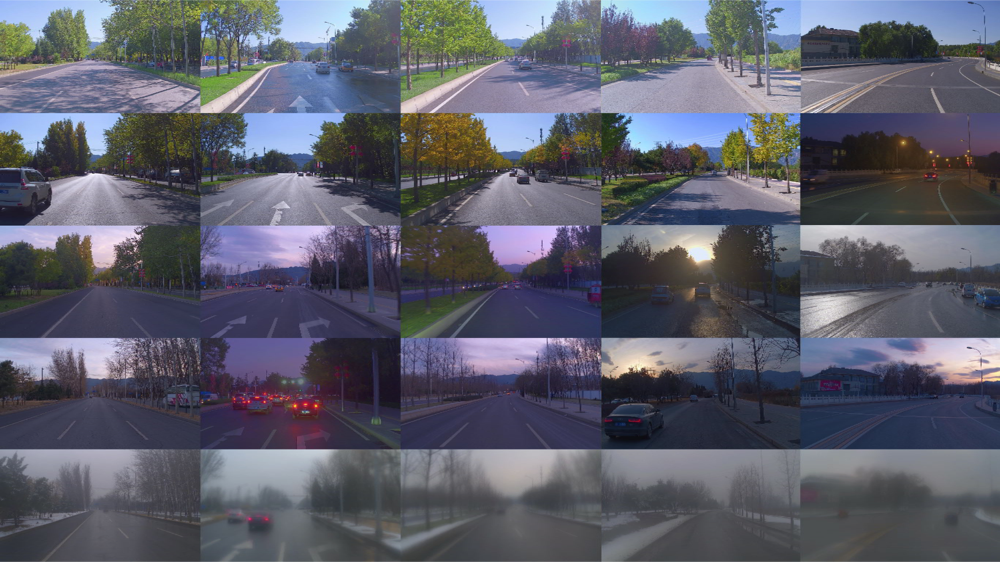Demo Code For Using Data
1. The PCD File Format
The pcd files in the dataset use a self-defined PCD file format header.
Here is the demo code to load pcd file.
/**@brief register the format header of PCD file of dataset into PCL. */
struct PointXYZIT {
float x;
float y;
float z;
unsigned char intensity;
double timestamp;
EIGEN_MAKE_ALIGNED_OPERATOR_NEW
} EIGEN_ALIGN16;
POINT_CLOUD_REGISTER_POINT_STRUCT (PointXYZIT,
(float, x, x)
(float, y, y)
(float, z, z)
(uint8_t, intensity, intensity)
(double, timestamp, timestamp)
)
/**@brief load pcd file.
* @param <pose_file_path> path of pcd file.
* @param <cloud> a PointXYZIT type pointer to store the content of PCD file.
*/
bool load_pcd_file(
const std::string& load_pcd_path,
pcl::PointCloud <PointXYZIT>::Ptr cloud) {
if (pcl::io::loadPCDFile(load_pcd_path.c_str(), *cloud) != 0) {
std::cerr < < "Can't load pcd file from " < < load_pcd_path < < std::endl;
return false;
}
return true;
}
2. Point Cloud Projection
Here is a C++ style pseudo code to project the point clouds onto the image with rolling shutter compensation.
/**@brief project point cloud onto image with rolling shutter.
* @param <timestamp> timestamp of the image.
* @param <cam_intrinsic> intrinsic of the camera.
* @param <cloud> 3D coords of point cloud.
* @param <pixels> corresponding pixel coords on image.
*/
const double shutter_time = 45.56 * 1e-3;
void project_rolling_shutter(
const double ×tamp, const CameraIntrinsics &cam_intrinsic,
const std::vector<Eigen::Vector3d> &cloud, std::vector<ImagePixel> *pixels) {
project_global_shutter(timestamp, cam_intrinsic, cloud, pixels);
uint32_t height = cam_intrinsic.height;
uint32_t width = cam_intrinsic.width;
// Generate cloud2camera transformation per image line
double last_timestamp = timestamp;
double first_timestamp = last_timestamp - shutter_time;
double stamp_stride = (last_timestamp - first_timestamp) / height;
std::vector<Eigen::Affine3d> cloud2camera_array(height);
for (uint32_t idx = 0; idx < height; ++idx) {
double cur_stamp = first_timestamp + stamp_stride * (idx + 0.5);
get_cloud2camera(cur_stamp, &cloud2camera_array[idx]);
}
// Iterative projection
const int itr_num = 2;
for (int itr = 0; itr < itr_num; ++itr) {
for (size_t idx = 0; idx < cloud.size(); ++idx) {
auto &pix = (*pixels)[idx];
// Use pose from current image line
int row = pix.y;
if (row < 0) {row = 0;}
if (row > height - 1) {row = height - 1;}
const Eigen::Vector3d pt3d_cam = cloud2camera_array[row] * cloud[idx];
if (pt3d_camΐ] > 1e-3) {
project_3d_2d(cam_intrinsic, pt3d_cam, &pix);
}
}
}
}
Here is the projection results.




